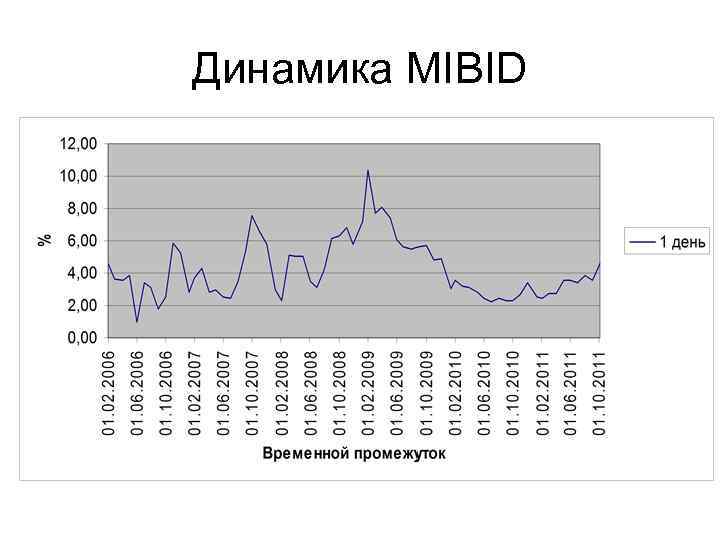
Industry-specific and extensively researched technical data (partially from exclusive partnerships). Next, we’ll look at the history of salt and learn about some of its cultural significance. This report provides an in-depth analysis of the salt market in Southern Asia. This report provides an in-depth analysis of the salt market in Central Asia. This report provides an in-depth analysis of the salt market in Eastern Asia. This report provides an in-depth analysis of the salt market in South-Eastern Asia.
The salt is shipped to hundreds of communities around the Great Lakes and along the St. Lawrence Seaway. Some of the salt is trucked to the Compass Minerals plant less than 4 kilometers away, to be packaged for distribution and sale at retailers in North America. The salt is also sold in bulk to manufacturers that make plastics, detergents, disinfectants and other important products. Morton Salt manufactures a wide range of salt products for applications ranging from food to swimming pool cleaners, but the core of its business is in food. The company sells finished food products including table salts, flavoured salts and spices but also produces salt for use in food processing. The rock salt produced from the mine is sold to retailers all over North America to spread in the winter snow and ice.
Salt Brines
The salt was once deposited 400 million years ago by an ocean that covered the Great Lakes Basin. However, the Afar people still venture into the cauldron early in the morning, when it is just degrees Celsius to extract blocks largest producer of salt in the world of salt from the 800 mm thick layer. The salt blocks were once used as a unit of money in Ethiopia, and are now sold across the country. They often supply farmers who use them to give livestock necessary minerals.

Rock salt (also known as halite) is present in the rocky under layers of the Earth’s surface and can be extracted through deep-shaft mining. These large deposits of salt are the result of ancient underground waterways that have long since dried up. As the water in the ponds evaporates, the salt concentration increases.
What are the Largest Producers of Salt and Pure Sodium Chloride in Pakistan?
Today, it is the third largest salt producer in the world, exporting surplus salt across regions from Japan to Indonesia. The salt mine is located around the Ojo de Liebre coastal lagoon to take advantage of its strong salinity. Part 1 of this Privacy Policy contains the Rio Tinto Data Privacy Standard, which provides an overview of Rio Tinto’s approach to personal data processing. Dating back tens of thousands of years, the rock art depict images of people, animals and geometric designs.
- The hub Pak Salts are expanding and they are starting a new plant of production which will be located in Baluchistan over the land having an area of 150,000 acres.
- The table salt by Standard Salts is enriched with many major and minor minerals including potassium, magnesium, calcium, iron, and iodine.
- The town was founded in 1957 when an American, Daniel Keith Ludwig (1897 – 1992), built a salt factory there to supply the demand for salt in the western United States.
Initially, dynasties monopolized its production by forbidding commoners from producing or selling the mineral. The China National Salt Industry Corporation (China Salt) is the body mandated to oversee the industry, and has a staff of approximately 48,476 people and more than $7 billion in assets. Despite high levels of production, the cost of salt also remains relatively high, a condition blamed on the monopoly. Salt is harvested through solar evaporation from seawater or salt lakes. Wind and the sun evaporate the water from shallow pools, leaving the salt behind. It is usually harvested once a year when the salt reaches a specific thickness.
Salt production worldwide 2010-2022, by country
Additionally, the corporation also engages in various social responsibility programs, such as poverty alleviation projects in rural areas. The rich, fragrant taste of smoky sea salt is great on baked potatoes, pizza, and other savory dishes. The next time that you smoke a piece of meat, put a tray of sea salt in there, too. This Canadian salt mine holds the distinction of being the largest salt mine in the world. For perspective, that’s just 15 feet shorter than the CN Tower in Toronto!
- The rich, fragrant taste of smoky sea salt is great on baked potatoes, pizza, and other savory dishes.
- Many wetland species use it as a wintering area, while some water birds use it as a staging ground as they migrate along the coast.
- Apart from salt production, CNSIC also engages in the production of other chemical products like soda ash, ammonium chloride, and calcium carbide, among others.
- The colorful rectangles are salt evaporation ponds and often seen in major salt-producing areas, such as the Makgadikgadi Pan in Botswana.
- This report provides an in-depth analysis of the salt market in the Middle East.
The Wieliczka Salt Mine in Poland is a World Heritage Site and a National Landmark in Poland. It no longer serves as an industrial mine and instead operates mainly as a tourist attraction. The deep grey salt deposits formed in the Miocene Era, or about 13.6 million years ago. The first mention of the salt in Wieliczka was in the 12 century when a Benedictine Monastery was granted rights to salt from the mine. The mine was in operation from the 13th century, until 1996, when the formal industry was shut down. These Peruvian salt terraces were once a precious asset of the Inca.
Take a Virtual Tour: The World’s Largest Salt Factory
The difficulty of mining made salt a rare symbol of wealth on a table. All three of the sites at Dampier Salt are recognised as being important to biodiversity. Biodiversity also extends to the local plant life – Lake Macleod has one of the largest inland areas of grey mangroves in the world. Sanikatta is the oldest salt manufacturing village in Karnataka State and Ganjam is the place for salt manufacturing in Odisha. Southeastern Iran is home to numerous salt domes and salt glaciers, which have been built over time by the movement of Earth’s crust. The town was founded in 1957 when an American, Daniel Keith Ludwig (1897 – 1992), built a salt factory there to supply the demand for salt in the western United States.
In particular, the company is known for its Lake Salt Production System, a technology that uses solar energy to evaporate water and extract salt. The system has been adopted in many countries, especially in Africa and Asia, to produce salt for consumption. CNSIC has an annual salt production capacity of about 23 million tons, which is more than any other salt manufacturer globally. Salt is one of the most important minerals used globally due to its numerous health benefits and its use in the food industry.
However, in 2008 some media reports disclosed that contaminated brine had been pumped deep into the lowest part of the mine caverns. This was because the groundwater of the region was breaching the caverns, raising the possibility of corroding the barrels with rust and causing leakage into the water. The Cathedral of Salt in Colombia is the largest salt mine in the country. It is carved out of the Zipaquira salt mines which have been in use since 5th century BCE. The Cathedral was carved out of an active salt mine in 1950 after being inspired by a small cathedral erected in the mines by workers. However, authorities shut down the working cathedral in 1990 after concerns were raised about structural soundness in an active mine.

It is also home to the Central Salt and Marine Chemicals Research Institute, which is one of the world’s leading salt research centers. In Sindh alone, there are more than 170 such types of lakes which are providing premium quality industrial salt. One of the major 2 lakes alone provides half a million tons of salt per annum.
India
When solution mines are located near chemical plants, they are called brine wells, and the salt is used for chemical production. After the salt is removed from a salt mine, the empty room often stores other substances, like natural gas or industrial wastes. Ghani Salts Private Limited is not only one of the largest producers of salt but they are also one of the largest exporters of salt as well. As the company was expanding, it was getting difficult for them to keep the quality in check.
How can farmers help the Great Salt Lake? This one may have an … – Deseret News
How can farmers help the Great Salt Lake? This one may have an ….
Posted: Wed, 09 Aug 2023 03:00:00 GMT [source]
The dump trucks are stripped to their frames, lowered into the mine and reassembled, never to come to the surface again. The maze of service depots, lunch rooms, storage caverns, workshops and plants below the lake used to have a bus system until the 100 miles of roadways got too complicated. Now the workers employ a fleet of John Deere Gators to get to and from their destinations. The Danakil Salt Pan is one of the most famed salt pans in the world, because of it’s reality-defying climate. The salt pan is nicknamed “The Gateway to Hell” because it is considered the hottest inhabitable place on the planet. Because parts of the Danakil are under 300 feet under sea level, forming a volcano-rimmed cauldron which reaches below 120 degrees in the summer.
Responses to “Why is the world’s largest salt-works in Baja California Sur?”
It is naturally produced when shallow ponds and bays dry up in the sun and the wind and large salt crystals are left behind where the salty water once was. When producing sea salt on an industrial scale, seawater is placed in large “concentrating ponds” to allow efficient evaporation from the sun and the wind. The manufacturing of sea salt can only be performed in areas with low rainfall in order for enough time to pass for evaporation. For this reason, sea salt is often produced in dry climates such as the Mediterranean and Australia. Typically, the salt exists as deposits in ancient underground seabeds, which became buried through tectonic changes over thousands of years. Shafts are sunk down to the floor of the mine, and rooms are carefully constructed by drilling, cutting and blasting between the shafts, creating a checkerboard pattern.
Global Himalayan Salt Market to Reach $5.5 Billion by 2030 – Yahoo Finance
Global Himalayan Salt Market to Reach $5.5 Billion by 2030.
Posted: Tue, 08 Aug 2023 11:37:00 GMT [source]
Then the salt solution, or brine, is pumped out and taken to a plant for evaporation. At the plant, the brine is treated to remove minerals and pumped into vacuum pans, sealed containers in which the brine is boiled and then evaporated until the salt is left behind. Depending on the type of salt it will be, iodine and an anti-clumping agent are added to the salt. Salt is one of the most common and affordable minerals in the world and it plays a vital role in the day to day life of plant and animal species.
Amazingly, this isn’t even a dent into the salt that’s stored here, which is estimated to be about 6.687 billion tons. The mine is 748 feet deep with 11 stories, the mine is filled with tunnels that run nearly half a mile into the mountain. Only 50% of what is mined is taken out, the other 50% is used as support columns in the enormous mine.

